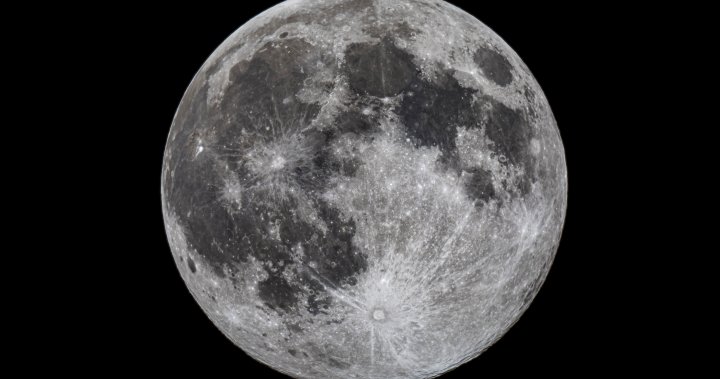Astronauts may one day set up camp in caves on the moon, according to research highlighting the existence of the newly identified underground structures.
An Italian research team on Monday published evidence of a moon cave that they believe is 40 metres wide and tens of metres long, if not more.
Researchers discovered the cave using radar measurements captured by NASA’s Lunar Reconnaissance Orbiter.
The cave is open on the moon’s surface at the Sea of Tranquility (also called Mare Tranquillitatis), 400 kilometres from where Neil Armstrong and Buzz Aldrin landed 55 years ago during the Apollo 11 mission.
“These lunar pits are interesting in terms of science and for potential future habitation,” researchers wrote in the study, published in the journal Nature on Monday.
Scientists called the cave “a promising site for a lunar base” and said it could allow for “long-term human exploration” because the cave could shelter astronauts from the moon’s harsh surface environment. The caves could also potentially shield explorers from solar radiation and micrometeorite strikes.
Breaking news from Canada and around the world
sent to your email, as it happens.
The Sea of Tranquility is not a sea and does not have any water. It is an ancient lava plain and contains the deepest known pit on the moon, though hundreds of other pits have also been discovered. The pit is believed to have been caused by the collapse of a lava tube on the moon.
The Mare Tranquillitatis pit crater as captured in 2022. The opening to the newly discovered cave is at the bottom of the pit.
NASA/Goddard/Arizona State University
Inside the pit is the newly discovered lunar cave, which is about 150 metres beneath the moon’s surface. Data revealed only the initial part of the underground cavity.
Two of the study’s authors, Leonardo Carrer and Lorenzo Bruzzone of the University of Trento, told The Associated Press it was “exciting” to finally be able to prove the existence of a lunar cave, since they have “remained a mystery for over 50 years.”
The depth of the cave’s entrance, combined with the pit’s steep slopes, could pose a challenge in building the necessary architecture for an astronaut base. The study hypothesized the cave’s walls would also likely need to be reinforced.
Researchers suggested conducting future robotic missions to map out lunar caves and inspect their potential habitability for human use.
Scientists want to gather more evidence to determine the viability of lunar caves. They hope further analysis will aid in developing a better understanding of planetary volcanism and the moon’s overall geological history across millions, maybe even billions, of years.
The research may also benefit exploration on Mars, where scientists have identified more than 1,000 cave entrances.
NASA is already planning to have astronauts return to the moon. The mission is expected to take place in the next decade.

© 2024 Global News, a division of Corus Entertainment Inc.





